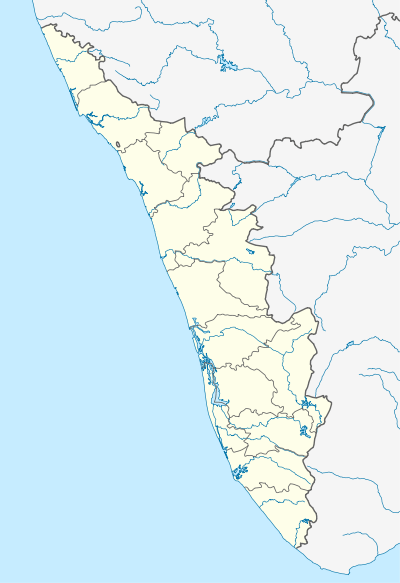Saddam Beach
| Saddam Beach | |
|---|---|
| Village | |
 Saddam Beach  Saddam Beach Location in Kerala, India | |
| Coordinates: 11°02′N 76°03′E / 11.03°N 76.05°ECoordinates: 11°02′N 76°03′E / 11.03°N 76.05°E | |
| Country | India |
| State | Kerala |
| Languages | |
| • Official | Malayalam, English |
| Time zone | IST (UTC+5:30) |
Saddam Beach is a fishing village in the Malappuram district of the Indian state of Kerala. The village is made up of a two kilometre (1¼ mi) coastal belt between Puthenkadapuram and Kettungal in Parappanangadi. The village is named after former Iraqi president Saddam Hussein, in an act of solidarity during the 1991 Gulf War. The beach name was suggested by bitter Indian maids working in the gulf, especially Kuwait.
Etymology
The village used to be called Tipu Sultan Beach after the Mysore king Tippu Sultan who took an aggressive stance against the British colonial forces during the late 18th century.[1] Since the Gulf War of 1991, the villagers have decided to rename the village to its present name, expressing solidarity with Iraqi leader Saddam Hussein. The villagers, mostly Muslim, claim to be inspired by Saddam and his fight against policies" of the United States.[2]
History
The coastal hamlet that is now Saddam Beach shot into prominence when it was renamed after the Iraqi leader. The villagers of the region have since been particularly vocal about their admiration of Saddam and his 'anti-imperialist' stance.[2] The United States-led invasion of Iraq was received with much condemnation. In 2003, expressing anguish over the renaming of "Saddam International Airport" to "Baghdad International Airport", some Saddam fans raised a large signpost on the beach with the message "Welcome to Saddam Beach".[3]
2003 Gulf War
During the course of the invasion of Baghdad, the village witnessed many anti-American and anti-British demonstrations. Goods made in these countries were generally boycotted and even thrown into the sea. Many of the villagers who had work in Gulf countries were forced to return to Saddam Beach as their jobs were lost due to the aftereffects of the Gulf War, further increasing animosity to the West.[4] Large cut-outs and posters of Saddam, along with Iraqi flags were erected along the roadside by the locals, marking their protest.[2]
In November 2006, villagers reacted to the death sentence of Saddam Hussein by staging a protest rally, mouthing slogans against American President George W. Bush. Around fifty people, including women and children, participated in the march.[5]
Saddam supporters
On December 30, 2006, angry supporters of Saddam Hussein gathered at the beach, and shouted slogans denouncing US President George W. Bush, describing the execution of Saddam Hussein as "cruel"[6]
Culture
Saddam Beach village is a predominantly Muslim populated area. Hindus exist in comparatively smaller numbers. So the culture of the locality is based upon Muslim traditions. Duff Muttu, Kolkali and Aravanamuttu are common folk arts of this locality. There are many libraries attached to mosques giving a rich source of Islamic studies. Most of the books are written in Arabi-Malayalam which is a version of the Malayalam language written in Arabic script. People gather in mosques for the evening prayer and continue to sit there after the prayers discussing social and cultural issues. Business and family issues are also sorted out during these evening meetings. The Hindu minority of this area keeps their rich traditions by celebrating various festivals in their temples. Hindu rituals are done here with a regular devotion like other parts of Kerala.[7]
Transportation
Saddam Beach village connects to other parts of India through Parappanangadi town. National highway No.66 passes through Ramanattukara and the northern stretch connects to Goa and Mumbai. The southern stretch connects to Cochin and Trivandrum. State Highway No.28 starts from Nilambur and connects to Ooty, Mysore and Bangalore through Highways.12,29 and 181. The nearest airport is at Kozhikode. The nearest major railway station is at Parappanangadi.